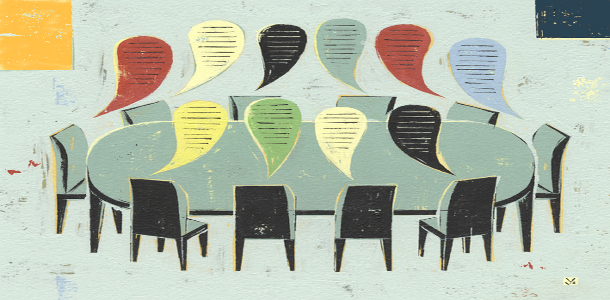Posted by laurajane on Aug 19, 2014 in Uncategorized | Comments Off on 10 tips for more compelling writing





Posted by laurajane on Aug 13, 2014 in Uncategorized | Comments Off on Acronyms: Avoiding the alphabet soup
Acronyms: Avoiding the alphabet soup
I work for a hospital system where TLAs (three-letter acronyms) are ubiquitous. Not only do we use health care acronyms, but also acronyms related to our system, and acronyms related to each facility. I was recently at a training seminar with co-workers from different departments. Our first exercise was to set the ground rules and expectations for the class. One ground rule that was quickly established: No acronyms were to be used in the class unless they were first defined. By the end of the seminar, we were discussing plans to create a group called the EAA: Employees...

What’s your headline style?
PR Daily readers have strong opinions when it comes to style. On this site, we’ve debated topics such as the use of the serial comma, the overuse of the exclamation point, and the capitalization of titles. And who can forget the lively conversations over spacing after punctuation and the use of nouns as verbs. One issue I would like ask PR Daily readers to debate is headline style. At my company, we recently changed our headline style to down style. With down style, only the first word, the first word after a colon or em dash, and proper nouns are capitalized in the...

Posted by laurajane on Jul 29, 2014 in Uncategorized | Comments Off on Vitalize your writing with anagrams
Vitalize your writing with anagrams
Like many other PR Daily readers, I’m always looking for ways to keep my writing fresh. Over the past several weeks, I’ve been playing around with rhetorical devices, such as alliteration, metaphors, and euphemisms. I’ve been having the most fun with anagrams. Anagrams are words or phrases that are formed by rearranging the letters of another word or phrase, using the original letters only once (dictionary: indicatory). There are several online anagram servers for novices (Internet Anagram Server, Word Explorer, and Online Anagram Solver), but as I’ve discovered,...

Posted by laurajane on Jul 22, 2014 in Uncategorized | Comments Off on Breaking the law: which style guide rules do you refuse to follow?
Breaking the law: which style guide rule...
Editors and writers often take on the role of enforcer when it comes to our company’s (or client’s) style rules. Whether we use the AP Stylebook, the Chicago Manual of Style, or a house style guide, we can explain, cite, and apply the rules with ease. But sometimes even the enforcers want to break the rules. Think carefully. Are there any style guide rules that you refuse to follow? Any style standards you will not adopt? Is it a rule that just recently changed or one that never made sense to begin with? In my own work, I routinely break three rules. They...













